Preparing for your newborn’s arrival? Are you going down the baby checklist? Swaddles come in handy, but how many swaddles do you need, exactly? Also, isn’t it strange that the more you read about it, the more different swaddling products you come across?
With so much confusion and variety in regards to these swaddling items, we wanted to help parents like you by making it easy for you to differentiate saddles from receiving blankets and other types of practices and items that wrap, cover or comfort your newborn.
Also, we aim to make it clear as to how many swaddles you need, precisely.
The world of swaddling may surprise you with its depth and history. Nevertheless, with the baby coming up, it’s important that you have all the information you need.
However, before we get into the nitty-gritty, it’s crucial that we cover the risks, safety tips and benefits of swaddling, as well. While some parents opt not to use swaddles at all since their baby is happy without them, swaddling has its advantages for babies and parents, too.
Risks, Safety Tips, and Benefits of Swaddling
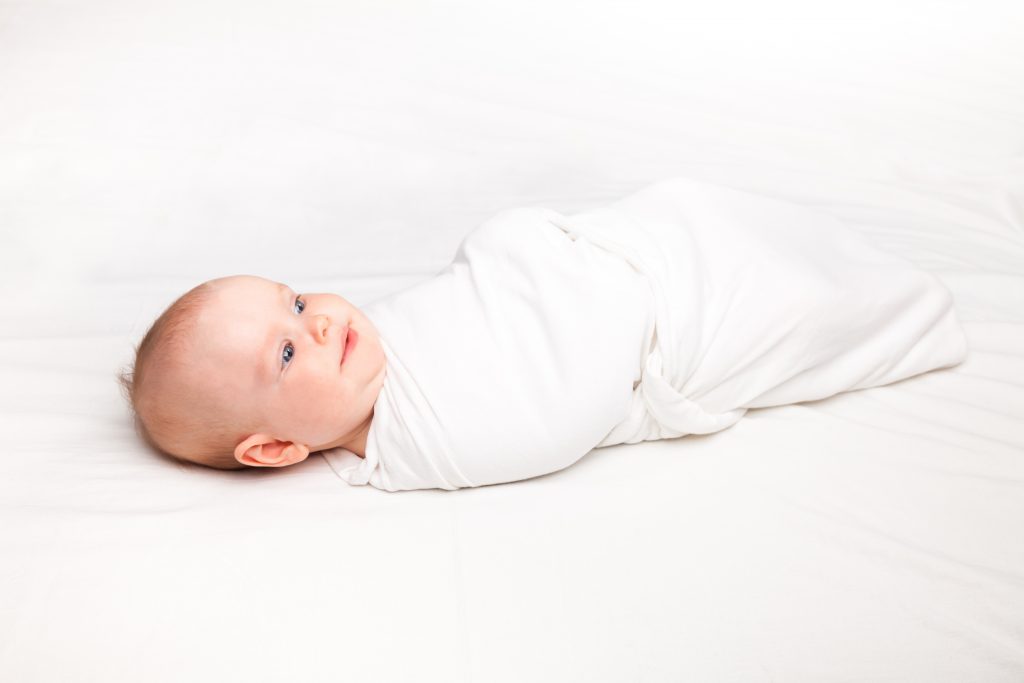
When done correctly, swaddling soothes and calms your baby, resembling a womb.
However, swaddling has its risks that you have to keep in mind when you bring your baby home from the hospital. Knowing these risks helps you reduce any sleep-related dangers.
The risks of swaddling, therefore, include the following:
- Swaddling has an increased risk of SIDS.
- It can potentially lead to overheating.
- Loose bedding can obstruct your baby’s breathing.
- If done unproperly, there’s a risk of hip dysplasia, as well.
Being aware of the risks is the first step towards preventing them.
Around two months, when your baby starts showing signs of rolling over, that’s when you should stop swaddling altogether. Meanwhile, you want to ensure your newborn’s safety by following the safety tips provided below and creating a safe sleep environment.
With that said, let’s take a moment to go over them.
Lower sleep-related risks by following these guidelines:
- Make sure that your baby always sleeps and naps flat on their back.
- Use a firm and flat sleeping surface with no incline.
- Don’t sleep with your baby. Share the room, not the bed.
- Tighten everything. No loose bedding or items within reach.
- Mind that your baby doesn’t overheat.
- When buying products, use caution and read the manual.
- Ensure that your baby sleeps in a no-smoke area.
We know how much parents worry, especially during the first few turbulent months.
Everything’s new, and with how soft and fragile your baby is, you will be overthinking practically everything. Therefore, mind the risks. Talking with other parents who have gone through this stage before can put you on the right path and alleviate some stress.
After that, you get all the benefits of swaddling, which include:
- Swaddling soothes and calms your baby.
- It helps them sleep longer.
- Swaddling imitates the comfort of the womb.
- It also keeps your baby from scratching their face.
- When swaddled, newborns are more quieter.
- It teaches your baby how to self-soothe.
- Leads to less anxiety.
On top of all that, swaddles provide many more additional benefits, too.
The risks might seem scary at first, but swaddling has been done since antiquity. With the right information and guidance, it becomes a straightforward process that relaxes your newborn and makes them feel happier with its many soothing and comforting benefits.
Nevertheless, there are many different types of swaddles out there.
In fact, you may even confuse them for receiving blankets or muslin blankets.
With so much variety out there, let’s take a moment to examine the key differences.
The Key Differences Between Swaddles, Receiving Blankets, and Muslin Blankets
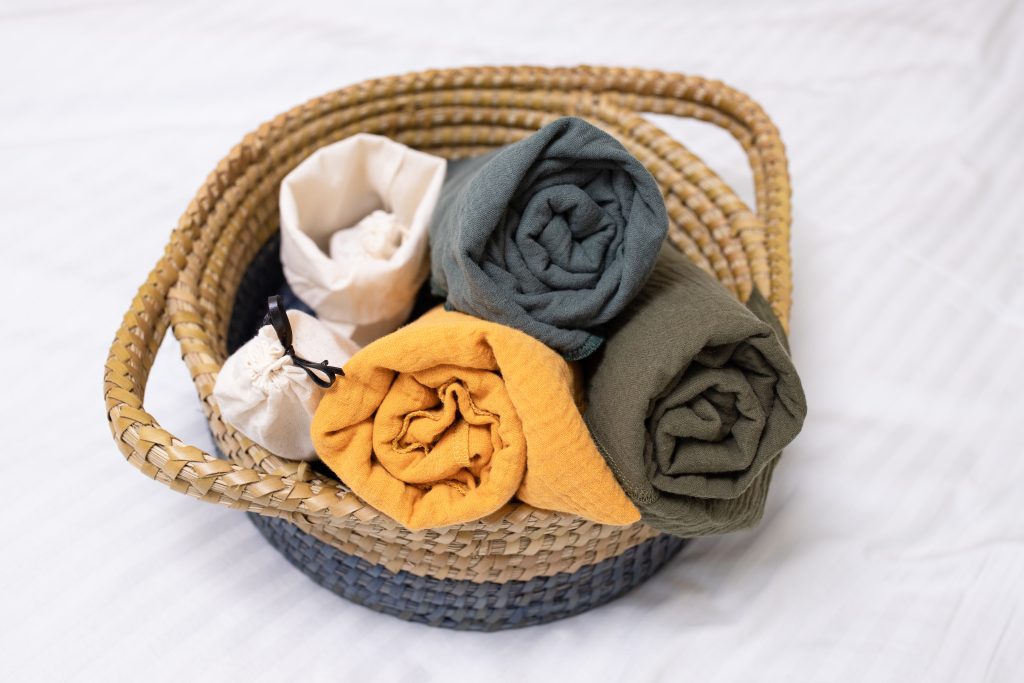
Let’s take a look at swaddles first. After all, that’s why you’re here.
When you swaddle your baby, it implies the age-old practice of wrapping them up in a blanket or a sheet to mimic the comfort and safety of the womb. Babies often experience the startle reflex, which jerks them from sleep. Swaddles prevent that.
Swaddles keep your baby firmly tucked in, providing maximum security.
Today, swaddles come with zippers and flaps.
Keep in mind that your newborn needs a tight swaddle, not loose. You’re likely wondering as to how many swaddles you need, but that depends on many factors, including how often you do laundry. As the general rule of thumb, you need at least three swaddles.
On the other hand, receiving blankets are used after delivery.
When the mother gives birth, a receiving blanket is applied to provide safety and comfort. Sometimes, receiving blankets are made from soft muslin, which is one of the many reasons why these terms get mistaken and used all the time interchangeably.
To make things even more complicated, a muslin blanket is considered a receiving blanket, but not all receiving blankets are, in turn, considered muslin blankets.
Hopefully, that makes sense. Regarding receiving blankets, newborns don’t have enough strength to worm themselves out of them. That’s why we advise transitioning to a swaddle when you get back home. Just make sure to follow safety tips and instructions.
At the end of the blankety spectrum, we also have muslin blankets.
What makes a muslin blanket is the materials from which it’s created. Its purpose is identical to that of the receiving blanket, but a muslin blanket is woven specifically from muslin fabric. It’s highly comfortable, breathable and used by mothers everywhere.
With the key differences out of the way, it’s time that we take a closer look at how many swaddles you need. That depends on many factors, so it’s important that we take everything in consideration. That way, we prioritize education and your baby’s safety.
So, How Many Swaddles Do You Need?
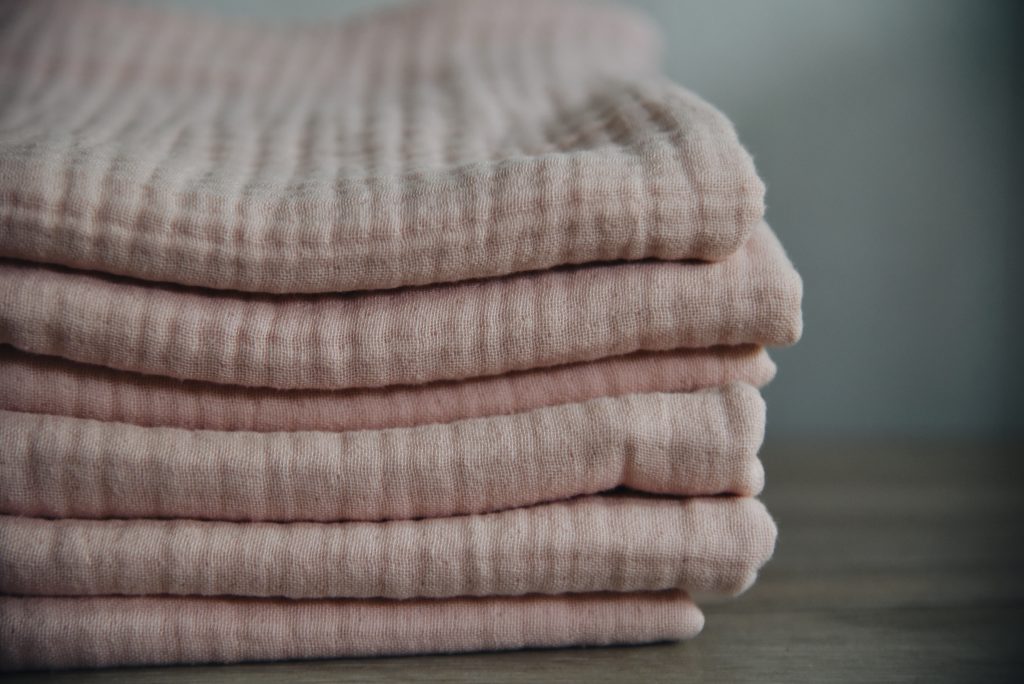
At the very least, you should have three swaddles.
However, there’s no reason as to why you shouldn’t get more.
Many factors are at play, but they vary from household to household. So, how many swaddles do you need? In reality, you can have as many swaddles as you want.
Why do we advise three, then, and not more? Well, it’s because you will be using one swaddle while the other is in laundry. The third swaddle, therefore, is kept in case of an emergency. The most important factor at play is how you do your laundry routine.
Also, maybe you want to use different types of swaddles, too.
Remember that you can save a few loads of laundry by getting more swaddles. After all, babies can get messy. Nothing guarantees that your swaddles are going to stay clean. In fact, you’d be outright silly to assume so. Do well to prepare for the worst.
If you can afford it, why not? You’re going to experience a lot of sleepless nights with your baby. The last thing you want on your mind is to be thinking about laundry.
Get yourself more swaddles and make your life easier.
If you’re thinking about bringing your own swaddle to the hospital before giving birth, you can. However, hospitals generally have their own receiving blankets, so parents don’t have to worry about what to bring to the hospital in those panicky moments before birth.
Also, if your newborn ends up spitting a lot, then it helps to have more swaddles at hand. More babies than you think experience infant gastroesophageal reflux. It’s wise to prepare for it by stocking up on swaddles, blankets and everything else you need.
In short, the answer to how many swaddles you need is all up to you. However, if you’ve made your choice to swaddle your newborn during the first two months, follow the guidance provided above and do well to consult with other parents for helpful tips, too.
The blankety world is so much more carefree when you’re adequately prepared.
When to Stop Swaddling Your Newborn
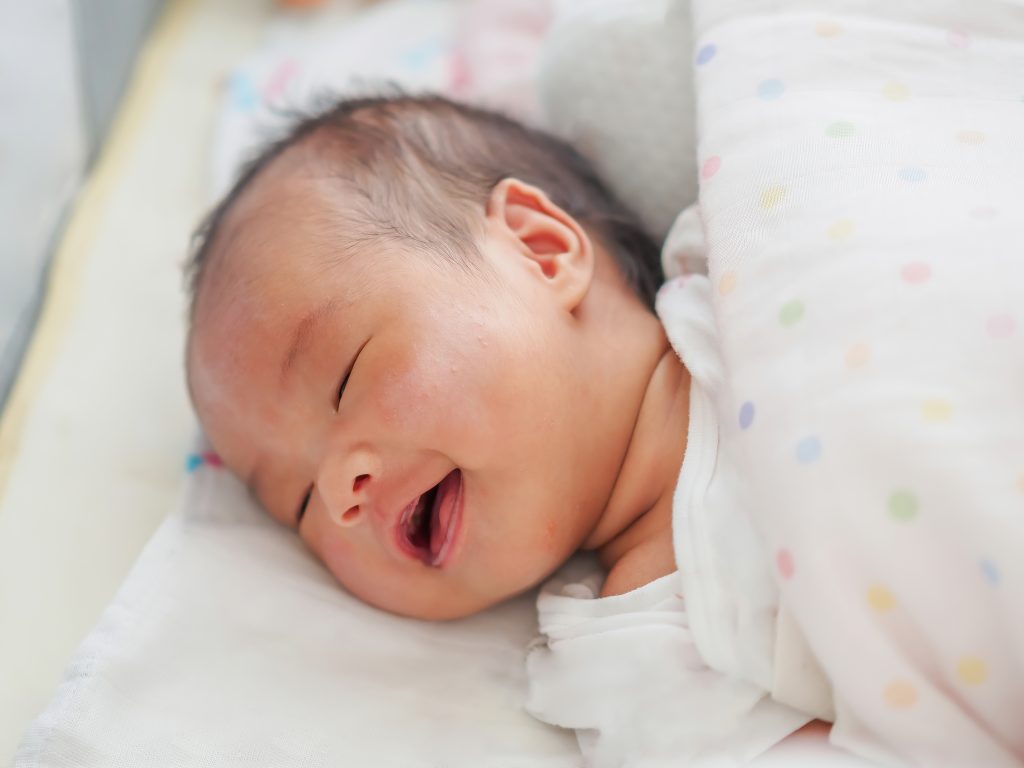
Now that we’ve adequately tackled how many swaddles you need let’s take a look at when you should stop swaddling your newborn. How long should you be using them for?
Swaddling your baby prevents them from moving their arms. Eventually, your newborn learns how to roll over, usually around the two month mark. As such, if they over roll over when swaddled, it prevents them from rolling themselves back to their stomach.
That can be extremely dangerous because it leads to suffocation.
So, as soon as the first signs of rolling over start, it’s time for a transition.
That can happen as soon as your newborn turns two months, but they may also hit the milestone later on. Regardless, your baby will have mastered the art of rolling over by the time they’re six months old. As such, you have to introduce a suitable replacement.
What Comes After the Swaddle?
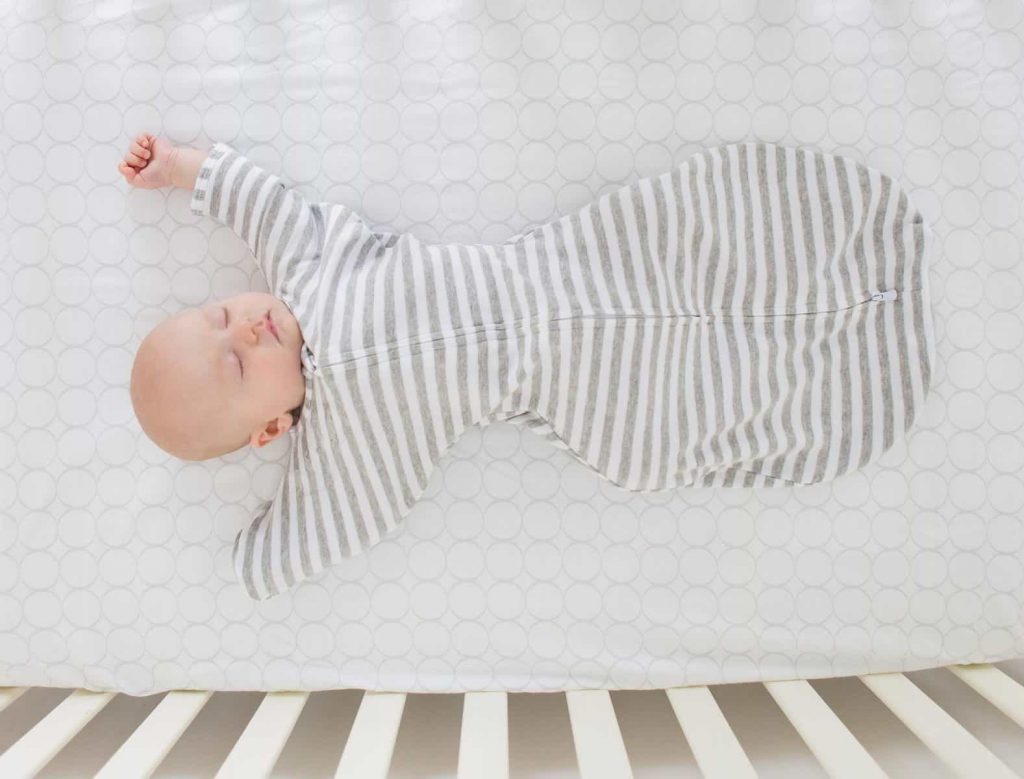
For parents, preparation means everything.
By now you know all you need to know about swaddles and how many you need, but what comes after the swaddle? It helps to plan ahead, so that you can start your transition in a timely manner. You have to stay flexible in regards to your baby’s precious sleep.
When your baby starts showing signs of fussiness in a swaddle, signs of rolling over or keeps trying to break out of the swaddle, it’s time for a change. Most parents would agree with us that a sleep sack makes an excellent replacement for the swaddle.
Like the swaddle, it provides temperature regulation, comfort and creates a wonderful sense of security for your baby. However, some babies need more time adapting to new changes, so don’t expect your baby to get the hang of it right away. Be patient.
However, babies usually don’t have a hard time adapting to the sleep sack, because it’s similar to swaddles. They provide identical qualities and ensure that your newborn’s sleeping schedule stays just as consistent, helping them fall asleep and stay asleep.
Basically, a sleep sack resembles a wearable blanket. They’re ideal, because they remove the need for any actual blankets in your baby’s sleep space. Make sure to use your sleep sack for both naptime and bedtime in order to sustain consistency for your newborn.
After swaddling, sleep sacks make for a great, safe and snug alternative.
In regards to materials, avoid anything synthetic. Go for safe options, such as cotton, preferably, since babies have sensitive skin. Similarly to cotton, linen and muslin are great options. Whichever you pick, you’re making sure that your baby stays warm and safe.
With so many options out there when it comes to your baby’s sleep, it’s important that we examine them all. That’s why we’re here, to make parenting easy and straightforward.
Remember to Stay Consistent

The most important thing is to get your baby used to a sleep schedule.
That way you’re not only making sure that your baby sleeps well, but that you get some well earned shuteye, too. Since babies spend most of their time asleep, roughly 14-17 hours a day, you want to make sure that your baby enjoys the finest sleep possible.
Besides using the right items, consistency makes or breaks the process.
Now that you know the importance of swaddles, and how many you need, you’re ready to ensure a safe and healthy sleep schedule for your precious little angel. Nevertheless, be wise enough to expect fussiness and sleepless nights. Swaddles don’t work magic.
Yet, they do manage wonders. They make your life incredibly easier.
In Conclusion

All things considered, if you’re wondering how many swaddles you need, the least you should go for is three. However, it’s wise to stock up on more. The swaddle easily gets dirty, so it helps to have a few extras lying around in case of unforeseen circumstances.
In reality, you need as many swaddles as you think you need, depending on how you do your laundry, how often, and depending if you’re going for variety as you try different types of swaddles. Now’s the time to prepare so that you can have everything ready.
You don’t want to be shopping for baby products after the baby arrives.
So, what comes next?
Well, now that you know how many swaddles you need, you’re good to go. On top of that, we took the liberty to remind you about safety tips, risks and benefits of swaddling.
Additionally, we even outlined the differences between swaddles and receiving blankets.
You have all the necessary tools to dive right in into the comfy world of swaddling.
Your baby is going to love it. Do it right, and you’ll love it, too, since you will be getting more uninterpreted sleep when you know that your baby’s warm, safe and asleep.

Mother of three and a primary school teacher. I’ve always loved being around children and helping them, so I chose my path as a teacher. It is sometimes hectic with three children, but I am 100 percent into it and wouldn’t change it for anything in the world.

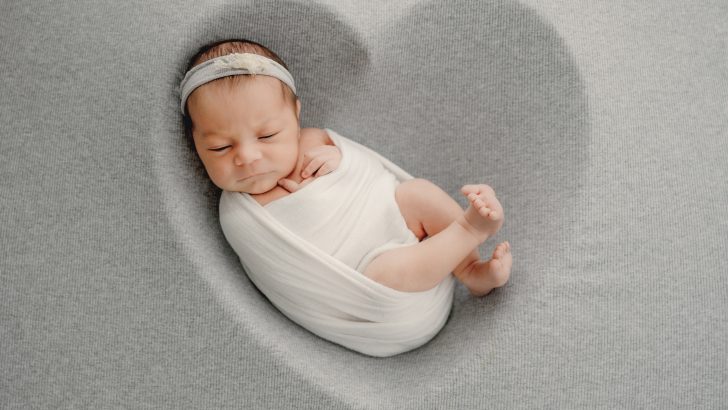
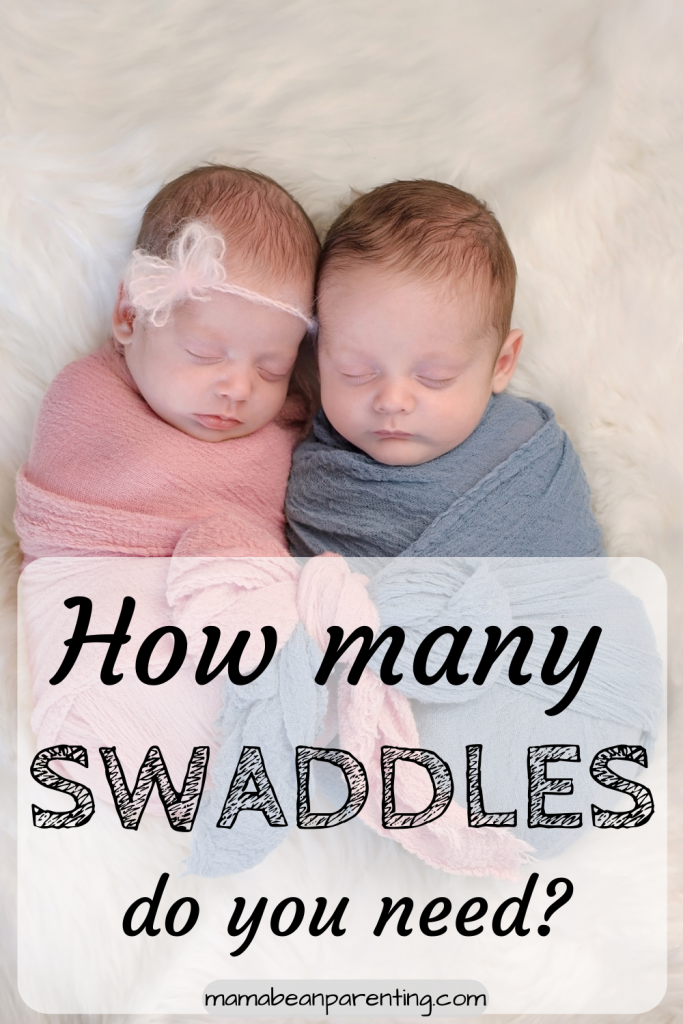
When Is the Best Time for Newborn Photos? • Mama Bean Parenting
Friday 3rd of February 2023
[…] Of course, if you want to make your baby even cuter, then feel free to bring some headbands, cute bows, and why not even hats, and swaddles. […]
Why Should You Never Wake a Sleeping Baby? • Mama Bean Parenting
Monday 23rd of January 2023
[…] Should Stop Swaddling When Your Baby is 2 Months […]